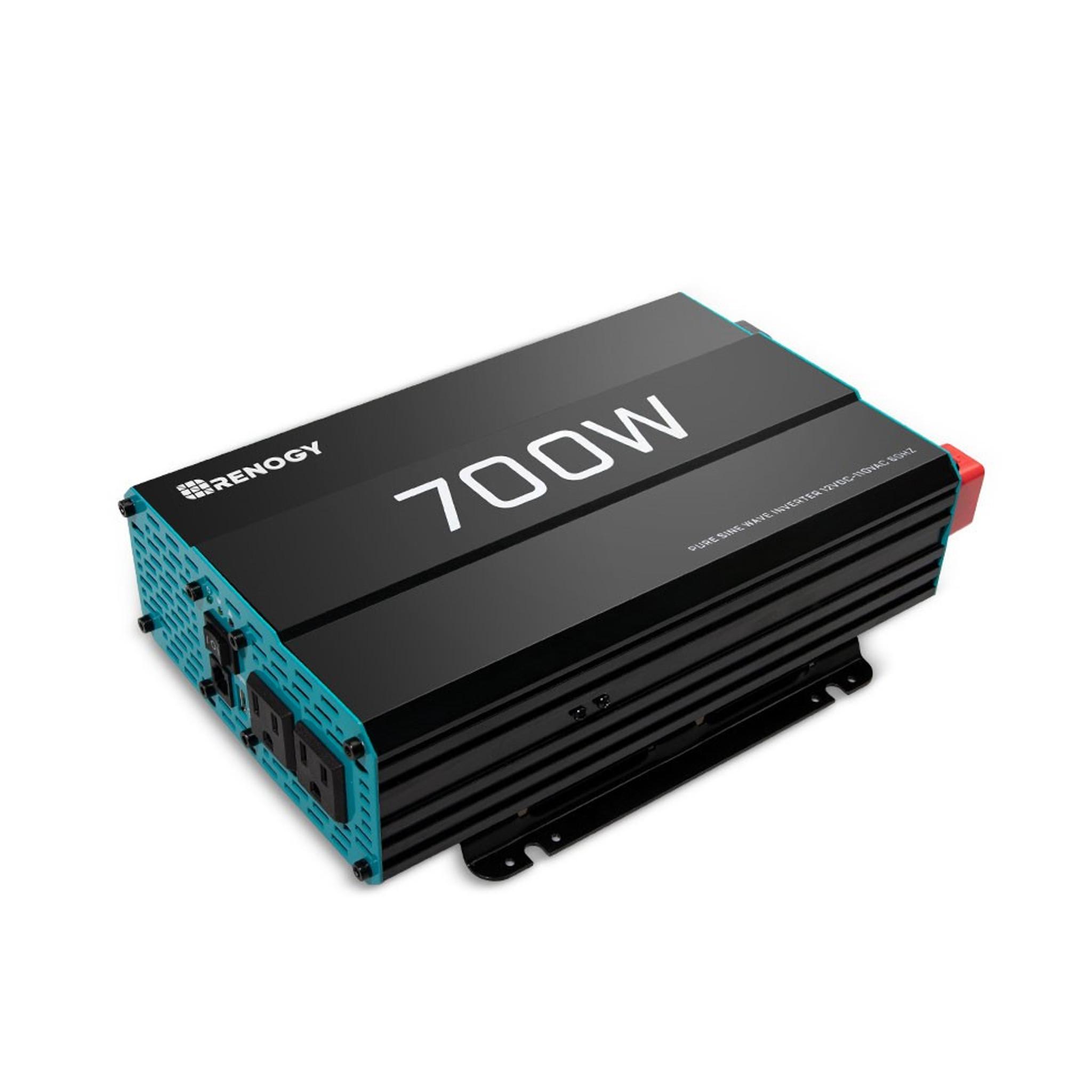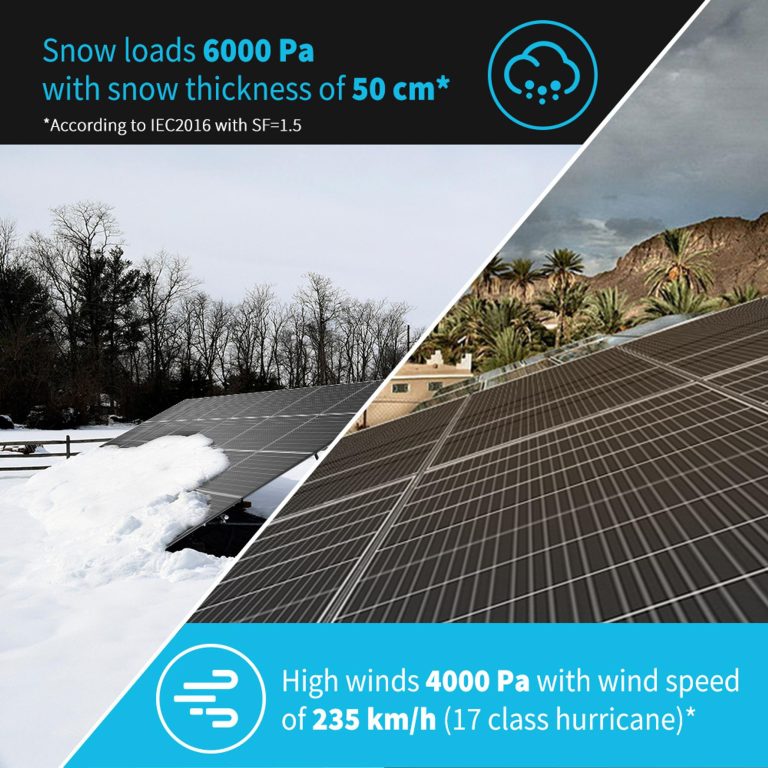Solar panels can be categorized in lots of ways. We can classify them according to whether they are monocrystalline or polycrystalline, additionally according to their cell modern technology, whether it is PERC, PERV, and so on, according to their power or present strength. Amongst all these classifications, among the most typical is to do it according to their voltage, whether they are 12v, 24v, 48v battery solar panels system or really hardly ever, 96V.
What do the voltages 12V, 24V and also 48V mean in a solar panel?
These words are category teams that have actually been informally developed in the photovoltaic or pv industry, yet do not represent an actual value of the solar component.
Solar panels classified as 12V are those that have a maximum power voltage in between 15V and 19V. For its component, the 24V has an optimal power voltage in between 36V as well as 39V. The 48 as well as 96 photovoltaic components have maximum power voltages that are close to these values, although their use is less regular.
Typically, the 36V solar panel will certainly be those that are within the range between 15V as well as 19V, so they will be thought about 12V. While the 72 cell panels will certainly be 24V as they have arrays between 36V and also 39V.
When reviewing the technological requirements of the solar panel, we can discern in which category the solar panel would get in by observing the value of the Maximum Power Voltage (Vmpp) or Maximum Power Voltage, in English.
Why are photovoltaic panels ranked at 12V, 24V as well as 48V?
The connection of these voltages is with solar cells, considering that they are separated right into those with a voltage of 12v lithium battery as well as 24V.
In order for solar panels to bill photovoltaic batteries, they have to create energy at a greater voltage than the battery. So a solar panel called 12 volts, which generates power at a voltage in between 15 and also 19 volts, will have the ability to charge a 12 volt battery but not a 24 volt one. Additionally, manufacturers anticipate that the conditions in which the panel is located can cause a decrease in voltage. A solar panel with a voltage of 15V can see that it is lowered to 13V because of, as an example, the cold. Yet it will certainly still be enough to bill the battery appropriately.
Can 12V batteries be charged with 24V solar panels?
A 24V component can charge a 12V battery thanks to an MPPT regulatory authority that, despite whether the input voltage is greater, will control it to ensure that it comes out at the indicated value, executing a DC/DC conversion, preventing power loss due to the voltage distinction.
Can 24V batteries be charged with 12V solar panels?
A 12V module can not charge a 24V battery. Although we used a solar regulator as in the previous instance, it is not efficient in boosting the voltage of the power it gets, so at the result, the energy would certainly not have the required voltage to bill the battery, because it requires it to be higher at 24V.
How to select between 12V, 24V and 48V solar panel systems?
A 12V solar panel is usually ideal for small houses or smaller projects contrasted to 24V solar panels. In addition to this basic guideline, there are various technological factors to consider when making a decision in between the two. We have tried to distinguish in between them based on five points:
Battery compatibility.
Inverter compatibility.
Charge controller.
Real usage instance (Applications).
Solar arrays.
Battery compatibility.
Normally, a 12V solar panel should collaborate with a 12 volt lithium battery as well as a 24V photovoltaic panel must deal with a 24V battery. An essential factor is that there are no 24V batteries available on the market, so two 12V batteries have to be joined in a collection link.
24V– 24V panel (2 * 12V batteries in series link).
We can likewise use an MPPT cost regulatory authority attached to a 12V battery
12V panel– 12V battery.
6V panel– 2/6V battery.

Inverter compatibility.
Like the battery, the solar panel has to likewise be compatible with the power of the inverter. For instance, a 12V solar panel should be paired with a 12v inverter and also a 24v photovoltaic panel should be made use of with a 24V inverter. The inverters are available in different varieties, 12V, 24V, 48V, and so on. 12V Battery– 12V Inverter. 12V Photovoltaic Panel.
24V battery (connected in series)– 24V inverter– 24V photovoltaic panel.
Compatibility with the charge controller.
The ability of a charge controller has to match the capacity of the inverter and battery. If we have a 12V battery and also a 12V inverter, a 12V cost controller should be used. In a similar way, for 24V. A crucial point to note below is that the rating of the solar panel ought to not be more than that of the charge controllers. As an example, a 9 Amp solar panel can not be coupled with a 6 Amp fee controller. Charge controllers are offered in a wide variety from 6 Amps to 53 Amps. Photovoltaic panel are likewise readily available in different arrays, for example:
10W Panel– 1A
20W Panel– 2.5 A.
180W Panel– 9A.
350W Panel– 8-9A.
App.
A 12V solar panel can be made use of for different applications such as street lights, traveler van, stores, small houses, house lights, mobile charging, solar bag, scientific research job, solar water pump, workplace, boats. fishing, etc. Besides, We can run 12v or 24v solar panels to charge solar generators. A 24V photovoltaic panel can be used in large houses, health centers, banks, offices, in network applications such as manufacturing facilities, apartments, parking areas, parks, federal government buildings, solar parks, etc. rankings. The 12V photovoltaic panel is available in 10W, 20W, 40W, 50W, 125W, 160W and 180W, while the 24V is readily available in 330W and also 350W.

